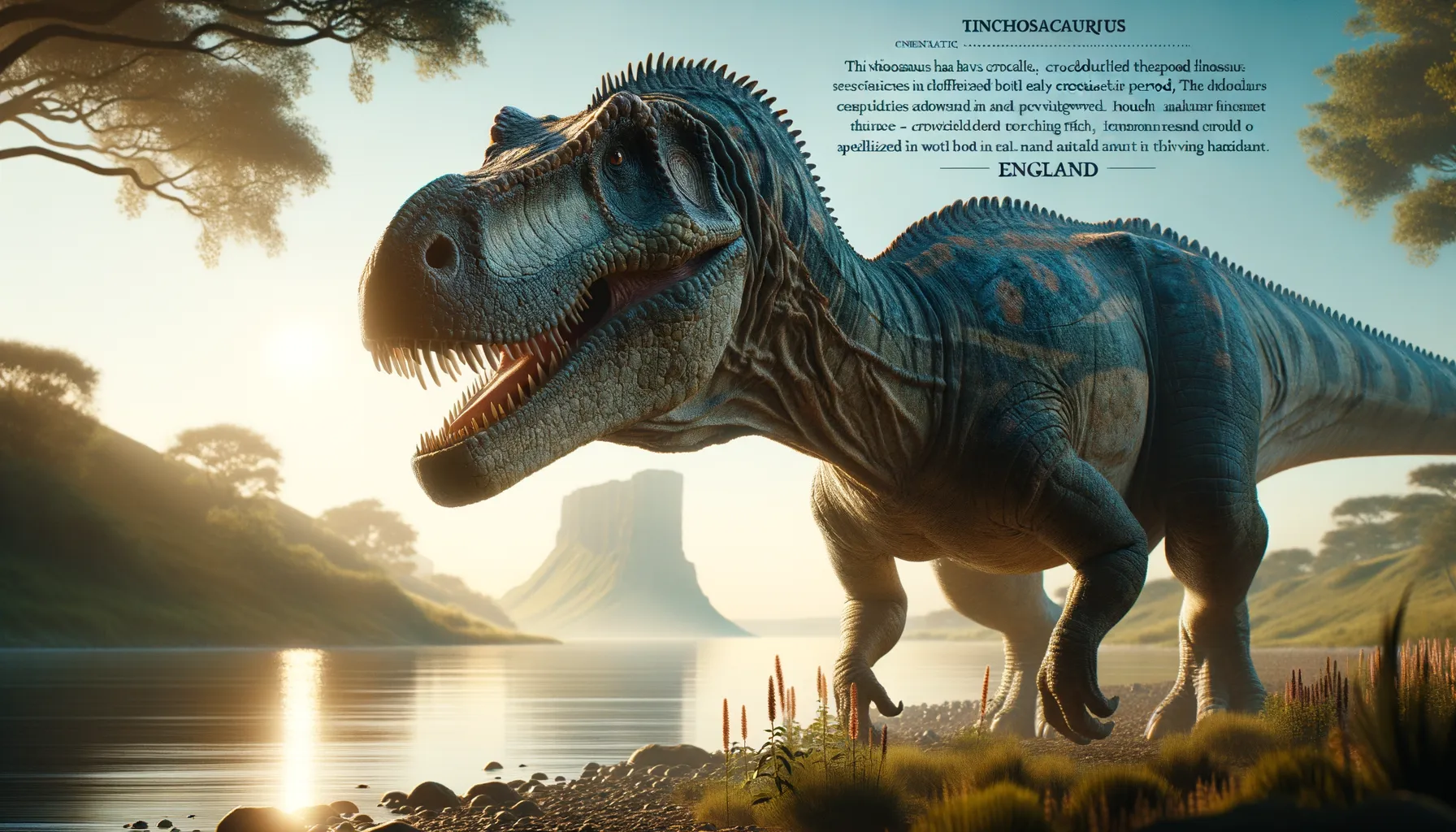
Suchosaurus
A fishing predator of ancient waters.
Period
Cretaceous
Length
Estimated to be around 6 meters long.
Height
About 1 meter tall at the shoulder.
Weight
Approximately 1 tonne.
Suchosaurus was a crocodyliform dinosaur known for its combination of characteristics seen in both crocodiles and theropod dinosaurs. Its long, narrow snout and sharp teeth suggest it was specialized for catching fish, thriving in both land and water environments during the early Cretaceous period. Originally discovered in England, its fossils give valuable insights into the diversity of European dinosaurs.
Diet
Suchosaurus primarily fed on fish, which it caught with its long, slender snout and sharp teeth. It also likely consumed small animals and possibly carrion, much like modern crocodiles do.
Hunting
Suchosaurus would have used its keen sense of sight and stealth to ambush fish and small prey in the water. On land, it might have relied on opportunistic feeding and scavenging to supplement its diet.
Environmental challenges
The Suchosaurus faced challenges such as fluctuating water levels in its semi-aquatic habitat, requiring adaptability to both aquatic and terrestrial environments. Competition with other aquatic and terrestrial predators also posed a challenge, driving Suchosaurus to develop its specialized hunting techniques. Climate changes during the Cretaceous could have affected its food sources and habitat availability. Additionally, predation on its young by larger predators would have been a constant threat.
Speed
Moderate speed suitable for its semi-aquatic lifestyle.
Lifespan
Estimated to live around 30-40 years.
First discovery
First discovered in the early 19th century in England.
Fun Facts
- Suchosaurus means 'crocodile lizard,' which hints at its crocodile-like appearance.
- It lived during the Early Cretaceous period, which was around 125 million years ago.
- Suchosaurus had long, sharp teeth that suggest it was a fish eater.
- Its remains were first discovered in England in the 19th century, but its fossils are very rare.
- Suchosaurus is thought to be closely related to spinosaurids, a group of dinosaurs known for their crocodile-like snouts.
- There is some debate among scientists about whether Suchosaurus should be considered a distinct species or part of another genus.
- Unlike more well-known dinosaurs, Suchosaurus is mostly known from its teeth, with few other fossil remains found.
Growth and Development
Young Suchosaurus likely grew rapidly in their early years to reach a safe size from predators. Developmentally, its snout and dentition adapted for piscivory were evident early, showing specialization from a young age. As they matured, growth in body size would gradually slow, with energy going toward reproduction and territory establishment. Like modern reptiles, molting and scaling changes might have occurred as they aged.
Habitat
Suchosaurus inhabited riverine and coastal environments, ideal for its fish-based diet. These areas provided abundant resources and relatively safe breeding grounds. Overhanging vegetation and fallen logs offered concealment from larger predators. During the dry season, access to deeper water channels would have been crucial for survival. Its semi-aquatic lifestyle allowed it to exploit different ecological niches within these environments.
Interaction with other species
Suchosaurus coexisted with other large herbivorous and carnivorous dinosaurs, which posed both competition and predation challenges. It likely preyed on smaller creatures and interacted minimally to avoid larger predators. Being part of the food web, its role as both predator and prey was crucial in maintaining the ecological balance. Its presence would have influenced the distribution and behavior of species within its habitat.
Natural lifespan
Its natural lifespan was likely around 30-40 years.
Reproduction
Suchosaurus likely laid eggs in nests constructed on riverbanks or sandy shores. Little is known about their parental care, but they might have guarded nests from egg predators. The nesting sites chosen would have been strategic, providing optimal temperature and humidity for incubation. Hatchlings, once emerged, would stay near water sources to evade terrestrial predators.
Social behaviour
Suchosaurus might have exhibited solitary behavior, except during the breeding season. Its interactions were likely limited to necessary territorial disputes or mating rituals. Juveniles possibly stayed close to adults for protection before becoming independent. Hunting might have been a solitary endeavor, given its specialized diet and opportunistic nature.
Fossil locations
Fossils of Suchosaurus have primarily been found in England. These discoveries have been made in areas indicative of ancient riverine systems. Fossil records show similarities with those of modern crocodiles, linking their ecological niches. The fossils provide crucial insights into the diversity and adaptability of predatory dinosaurs in European prehistory.
